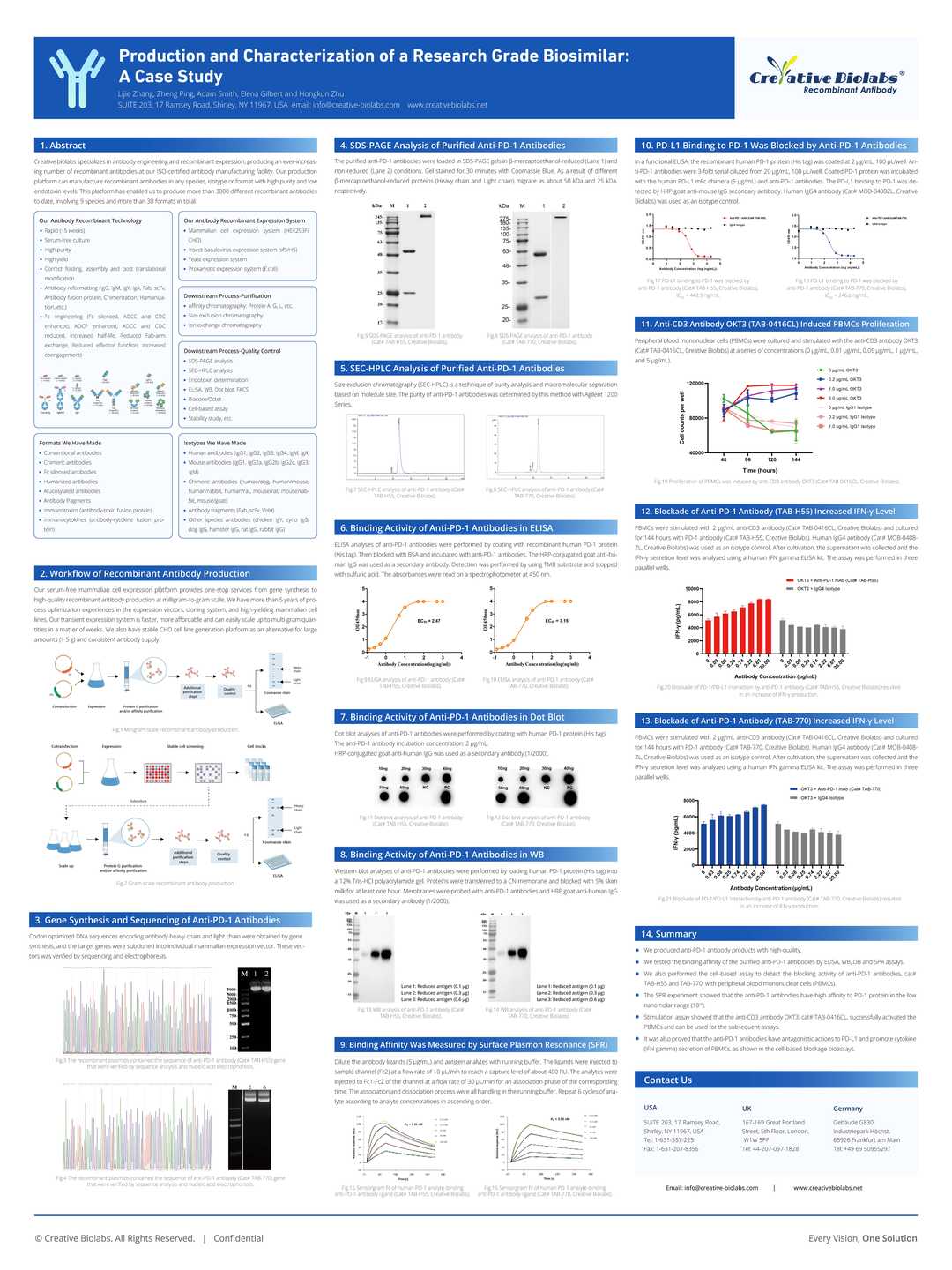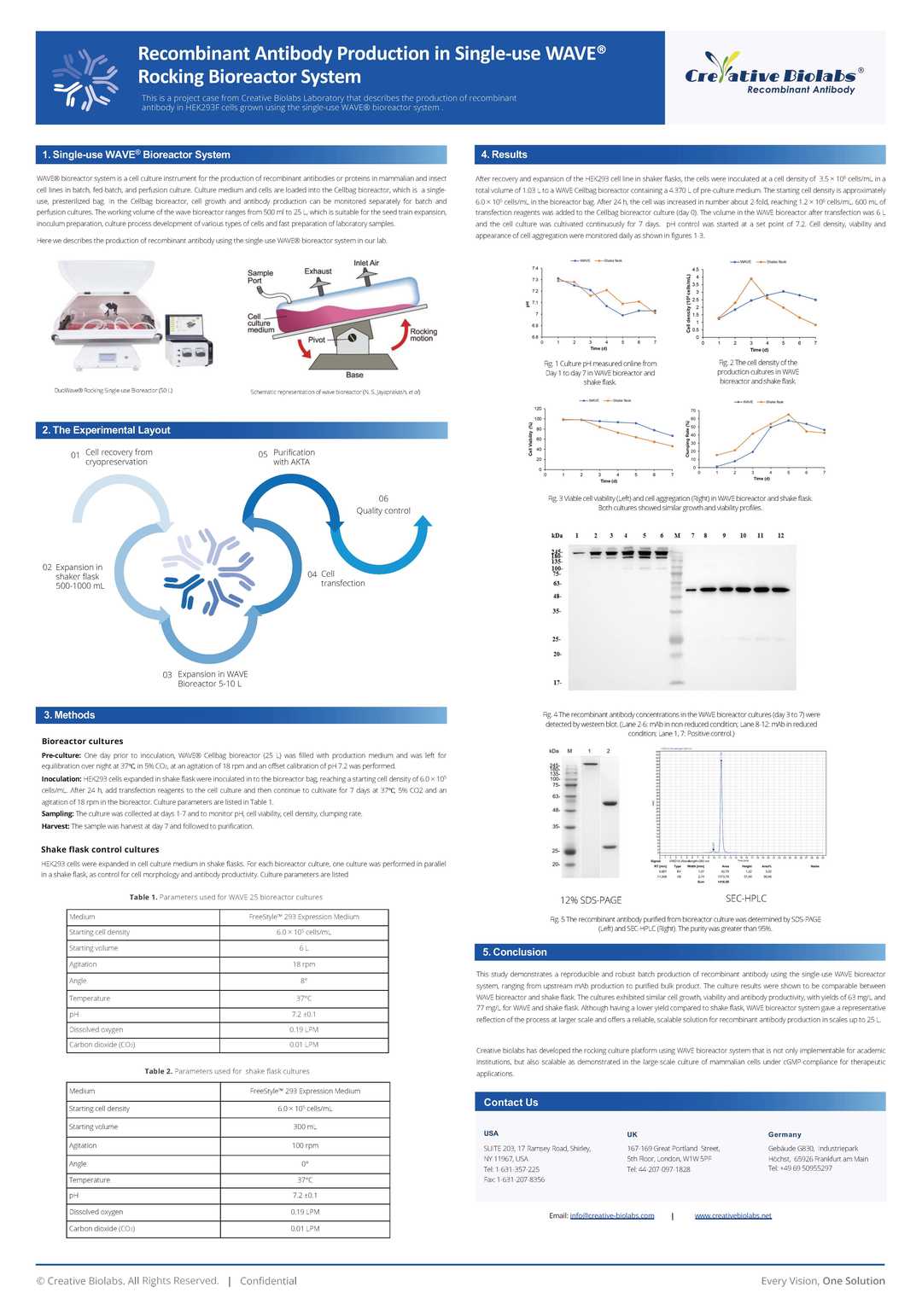Anti-PDGFR (clone W24V276) Recombinant Antibody Coupled Liposome (VS-1024-FY271)
CAT#: VS-1024-FY271
Anti-PDGFR antibody conjugated liposomes hold significant promise in the research of metastatic fibrosarcoma by enabling targeted delivery of therapeutic agents directly to tumor cells. This targeted approach may enhance the efficacy of treatment while minimizing systemic side effects, thereby improving patient outcomes. Additionally, the use of liposomes can facilitate the incorporation of various drugs, including chemotherapeutics and anti-angiogenic agents, allowing for combination therapies that may synergistically inhibit tumor growth. Overall, this innovative strategy could pave the way for more effective and personalized therapeutic interventions in the management of metastatic fibrosarcoma.
Specifications
- Potential Clinical Applications
- Metastatic fbrosarcoma
Product Composition
- Clone
- W24V276
- Antibody Type
- IgG
- Antibody Host
- Human
- Antibody Reactivity
- Human
- Antibody Description
- This is a recombinant human monoclonal antibody that was specifically engineered to selectively bind to the Platelet-Derived Growth Factor Receptor (PDGFR). By targeting this receptor, the antibody can modulate various biological processes associated with cell growth, survival, and proliferation.
Product Property
- Storage
- See in the COA
- Storage Shelf Time
- See in the COA
Target Information
- Target
- PDGFR
- Introduction
- The protein encoded by this gene is a cell surface tyrosine kinase receptor for members of the platelet-derived growth factor family. These growth factors are mitogens for cells of mesenchymal origin. The identity of the growth factor bound to a receptor monomer determines whether the functional receptor is a homodimer (PDGFB or PDGFD) or a heterodimer (PDGFA and PDGFB). This gene is essential for normal development of the cardiovascular system and aids in rearrangement of the actin cytoskeleton. This gene is flanked on chromosome 5 by the genes for granulocyte-macrophage colony-stimulating factor and macrophage-colony stimulating factor receptor; all three genes may be implicated in the 5-q syndrome. A translocation between chromosomes 5 and 12, that fuses this gene to that of the ETV6 gene, results in chronic myeloproliferative disorder with eosinophilia.
- Alternative Names
- Platelet Derived Growth Factor Receptor Beta; Platelet-Derived Growth Factor Receptor, Beta Polypeptide; Beta-Type Platelet-Derived Growth Factor Receptor; Platelet-Derived Growth Factor Receptor 1; CD140 Antigen-Like Family Member B; PDGF-R-Beta; EC 2.7.10.1; PDGFR-Beta; PDGFR-1; PDGFR1; PDGFR; Platelet-Derived Growth Factor Receptor Beta
- Full Name
- Platelet Derived Growth Factor Receptor Beta
- Gene ID
- 5159
- UniProt ID
- P09619
- Sequence Similarities
- Belongs to the protein kinase superfamily.
- Cellular Localization
- Cell membrane; Single-pass type I membrane protein; Cytoplasmic vesicle; Lysosome lumen
- Post Translation Modifications
- Autophosphorylated on tyrosine residues upon ligand binding.
Autophosphorylation occurs in trans, i.e.
one subunit of the dimeric receptor phosphorylates tyrosine residues on the other subunit.
Phosphorylation at Tyr-579, and to a lesser degree, at Tyr-581, is important for interaction with SRC family kinases.
Phosphorylation at Tyr-740 and Tyr-751 is important for interaction with PIK3R1.
Phosphorylation at Tyr-751 is important for interaction with NCK1.
Phosphorylation at Tyr-771 and Tyr-857 is important for interaction with RASA1/GAP.
Phosphorylation at Tyr-857 is important for efficient phosphorylation of PLCG1 and PTPN11, resulting in increased phosphorylation of AKT1, MAPK1/ERK2 and/or MAPK3/ERK1, PDCD6IP/ALIX and STAM, and in increased cell proliferation.
Phosphorylation at Tyr-1009 is important for interaction with PTPN11.
Phosphorylation at Tyr-1009 and Tyr-1021 is important for interaction with PLCG1.
Phosphorylation at Tyr-1021 is important for interaction with CBL; PLCG1 and CBL compete for the same binding site.
Dephosphorylated by PTPRJ at Tyr-751, Tyr-857, Tyr-1009 and Tyr-1021.
Dephosphorylated by PTPN2 at Tyr-579 and Tyr-1021.
- Protein Refseq
- NP_001341945.1; NP_001341946.1; NP_002600.1
- Function
- Tyrosine-protein kinase that acts as a cell-surface receptor for homodimeric PDGFB and PDGFD and for heterodimers formed by PDGFA and PDGFB, and plays an essential role in the regulation of embryonic development, cell proliferation, survival, differentiation, chemotaxis and migration.
Plays an essential role in blood vessel development by promoting proliferation, migration and recruitment of pericytes and smooth muscle cells to endothelial cells.
Plays a role in the migration of vascular smooth muscle cells and the formation of neointima at vascular injury sites.
Required for normal development of the cardiovascular system.
Required for normal recruitment of pericytes (mesangial cells) in the kidney glomerulus, and for normal formation of a branched network of capillaries in kidney glomeruli.
Customer Review
There are currently no Customer reviews or questions for VS-1024-FY271. Click the button above to contact us or submit your feedback about this product.
Submit Your Publication
Published with our product? Submit your paper and receive a 10% discount on your next order! Share your research to earn exclusive rewards.
Downloadable Resources
Download resources about recombinant antibody development and antibody engineering to boost your research.
Datasheet
MSDS
COA
Certificate of Analysis LookupTo download a Certificate of Analysis, please enter a lot number in the search box below. Note: Certificate of Analysis not available for kit components.
Popular Products

Application: IP, IF, FuncS, FC, Neut, ELISA, ICC

Application: IF, IP, Neut, FuncS, ELISA, FC, ICC
-2.png)
Application: WB, ELISA, FC, IHC, IP

Application: FC, IHC-Fr, IP, ELISA, Block

Application: ELISA, Inhib, FuncS
For research use only. Not intended for any clinical use. No products from Creative Biolabs may be resold, modified for resale or used to manufacture commercial products without prior written approval from Creative Biolabs.
This site is protected by reCAPTCHA and the Google Privacy Policy and Terms of Service apply.





















